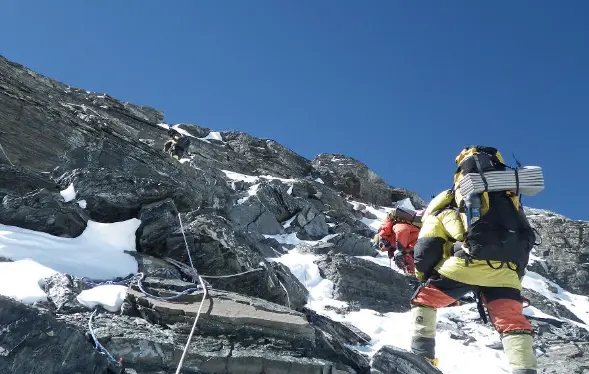Everest: Conquering the Roof of the World – A Climber’s Guide
Mount Everest, the crown jewel of the Himalayas, beckons adventurous spirits with its awe-inspiring majesty. Standing at a staggering 8,848.86 meters (29,031.7 ft), it’s the highest mountain on Earth. Scaling Everest is a dream for many, but it’s a challenge not to be taken lightly. It’s a demanding expedition that requires meticulous planning, rigorous training, and a healthy dose of courage.
Before You Take the First Step:
Physical Fitness: Everest is no walk in the park. Summiting it demands peak physical condition. Expect long days of trekking in harsh conditions, carrying heavy backpacks, and battling the effects of altitude sickness. A dedicated training regimen that builds endurance, strength, and cardiovascular health is essential.
Mental Preparation: Climbing Everest is a mental marathon as much as a physical one. You’ll face extreme weather, isolation, and moments of doubt. Building mental fortitude, resilience, and a positive attitude are crucial for success.
Financial Commitment: The cost of an Everest expedition can range from $30,000 to $120,000 or more. This covers permits, climbing guides, equipment, food, and logistical support.
Choosing Your Route:
There are two main climbing routes: the south side in Nepal and the north side in Tibet. The south side is statistically more popular with a higher success rate, but it also sees more climbers. The north side is known for harsher weather conditions and less infrastructure.
The Expedition Breakdown:
Climbing Everest isn’t a single push to the summit. It’s a multi-stage process involving acclimatization to the altitude. Here’s a simplified breakdown:
-
Base Camp (5,364 m): This serves as your starting point, where you’ll acclimatize to the altitude and finalize preparations.
-
Rotational Camps: Several camps are set up at increasing altitudes, allowing your body to adjust gradually. These involve short climbs followed by descents back to lower camps.
-
Icefall: The Khumbu Icefall is a treacherous section with crevasses and unpredictable movements. Fixed ropes and ladders help navigate this dangerous area.
-
Hillary Step: This nearly vertical rock face presents a significant challenge requiring climbing skills.
-
Summit Push: The final push to the summit tests your physical and mental limits. Expect extreme cold, thin air, and exhaustion.
The Risks and Challenges:
Everest is an unforgiving mountain. Here are some of the dangers you’ll face:
-
Altitude Sickness: Thin air at high altitudes reduces oxygen intake, leading to headaches, nausea, and potentially life-threatening conditions like HAPE (High Altitude Pulmonary Edema) and HACE (High Altitude Cerebral Edema).
-
Extreme Weather: Blizzards, avalanches, and sudden wind gusts can pose serious threats.
-
Avalanches: The Khumbu Icefall is notorious for avalanches, a constant risk throughout the climb.
-
Falls: Slippery slopes and treacherous terrain increase the risk of falls, which can be fatal.
Climbing Responsibly:
Everest is a fragile ecosystem. Climbers have a responsibility to minimize their environmental impact. Practices like using eco-friendly toilets, packing out all waste, and respecting local customs are essential.
Everest: A Dream Within Reach
Climbing Everest is an incredible accomplishment, pushing you to your physical and mental limits. It’s a journey of self-discovery, perseverance, and experiencing the raw power of nature. However, it’s not for the faint of heart. Be honest with yourself about your capabilities and prioritize safety above all else.
For those who dare to dream, with the right preparation, training, and a healthy dose of respect for the mountain, conquering Everest can become a reality. But remember, the summit is just one part of the story. The true reward lies in the journey itself.


Comments are closed, but trackbacks and pingbacks are open.